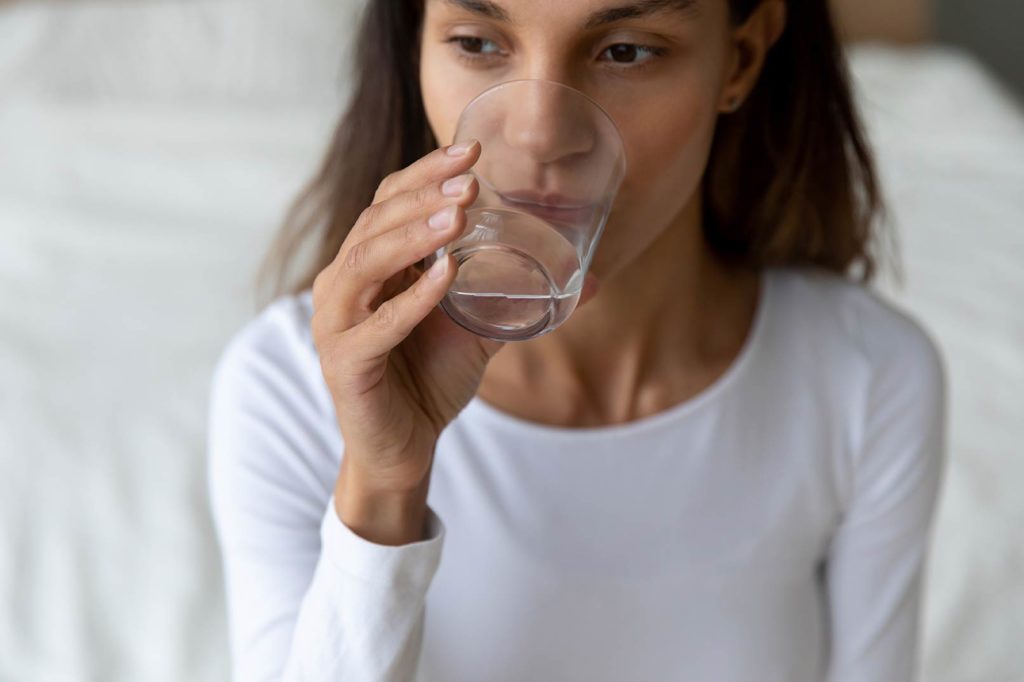
Widespread and easily available COVID-19 testing continues to be an important strategy in the efforts to contain the spread of the SARS-CoV-2 virus as case counts continue to rise across the U.S. this year. In fact, the CDC recently issued new guidelines recommending that even fully vaccinated individuals get tested if they have COVID-19 symptoms or have been in close contact with someone who has COVID-19. As the pandemic continues, some people will need to undergo repeated testing as they travel, return to workplaces or schools, or become exposed to the virus during everyday activities.
Proper collection of samples is key to accurate testing results. Currently, a swab of the back of the nose and throat (nasopharyngeal or NP swab) is the gold standard sample for COVID-19 testing. Swabs of the front of the nostrils (nose swabs) are also acceptable samples and are generally less irritating than NP swabs. Even so, a nose swab can be an uncomfortable or distressing experience for some people, particularly children.
Besides discomfort, NP swabs and nose swabs have other disadvantages. NP swabs require trained personnel to perform, which can put them at risk of being exposed to the virus during collection. During surges in COVID-19 cases, supplies of swabs have been critically low, which has hampered efforts for widespread testing. While saliva can be easily self-collected by patients for some COVID-19 tests, the sample’s small size and uneven consistency can make it difficult to process efficiently in the lab.
Results of a new study have shown that gargled salt water (0.9% saline), which is less invasive and can be easily self-collected by patients, is an acceptable alternative to an NP swab for COVID-19 PCR testing. The study, published in a recent issue of Microbiology Spectrum, supports findings from earlier studies that evaluated gargled salt water samples as replacements for NP swabs.
While some previous studies included mainly hospitalized patients with severe COVID-19 infections, the researchers of this recent study were most interested in outpatients because much of COVID-19 testing takes place in doctors’ offices, clinics, drugstores, and other outpatient settings. Unlike earlier research, the new study directly compared NP swabs and gargled salt water samples by collecting them at the same time and testing them in parallel.
For the study, the researchers recruited 80 participants, including both males and females with ages ranging from 13 to 89 years old. The participants had suspected COVID-19 infections due to their close contact with someone diagnosed with the infection, and most had one or more symptoms of the infection, such as cough, runny nose, fever and loss of taste or smell.
Sample collections took place when the participants visited doctors’ offices. For each patient, a medical professional obtained an NP swab. Immediately before or after that, each patient self-collected a sample by gargling 5 milliliters (about one teaspoon) of salt water (0.9% saline) for 30 seconds. Each pair of samples was tested at the same time with a COVID-19 PCR test.
The findings showed that results from both types of samples matched exactly. A total of 26 NP swabs tested positive for the COVID-19 virus as did the corresponding saline samples. Likewise, 54 NP swabs and the corresponding saline samples tested negative.
The researchers note that while these findings are promising, additional studies are needed to show that results are comparable between the two types of samples over different stages of the infection (from early to late infection) when the amount of virus present may vary. Each commercially manufactured or laboratory developed SARS- CoV -2 test would require similar paired sample studies to validate their test performance with a gargled sample.
This research is important because self-collected gargled saline samples could save resources like swabs and personal protective equipment for medical professionals, who wouldn’t be required to collect the gargled saline samples and would be less likely to be exposed to the virus. Furthermore, an easier, less invasive way to self-collect samples may make people more likely to get tested when necessary, which can help to limit the spread of COVID-19.
Sources
Zander, J., Scholtesc, S., Ottinger M., et al. (2021). Self-Collected Gargle Lavage Allows Reliable Detection of SARS-CoV-2 in an Outpatient Setting. Ahead of print. https://doi.org/10.1128/Spectrum.00361-21
Centers for Disease Control and Prevention. COVID-19: When You’ve Been Fully Vaccinated. Accessed August 18, 2021. https://www.cdc.gov/coronavirus/2019-ncov/vaccines/fully-vaccinated.html
